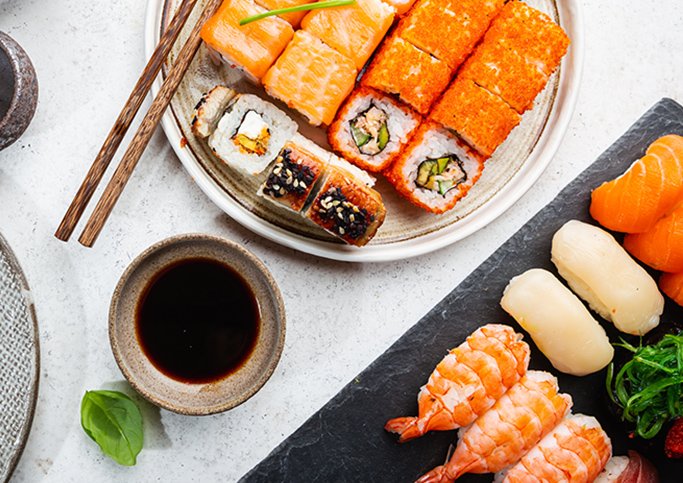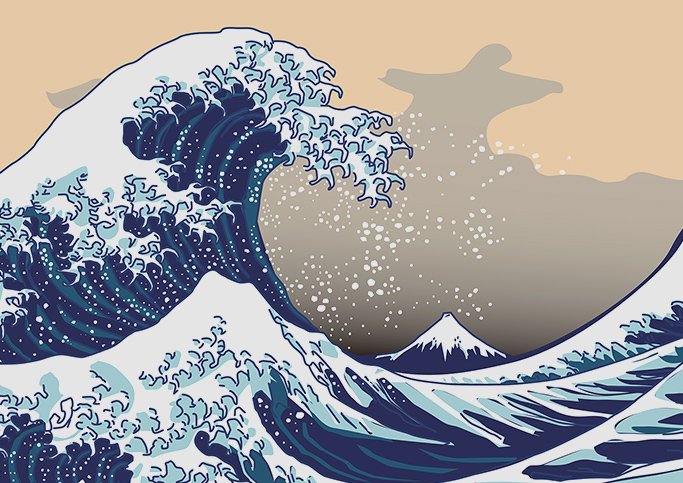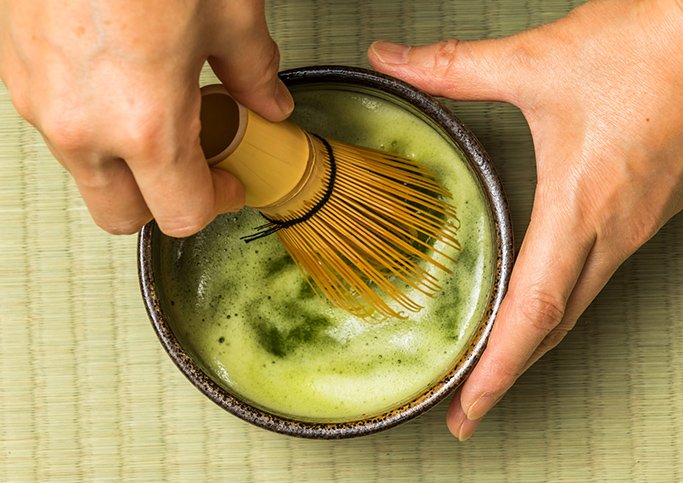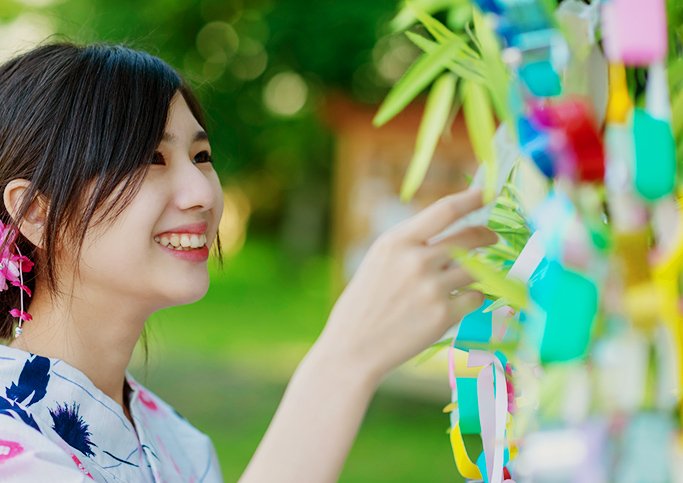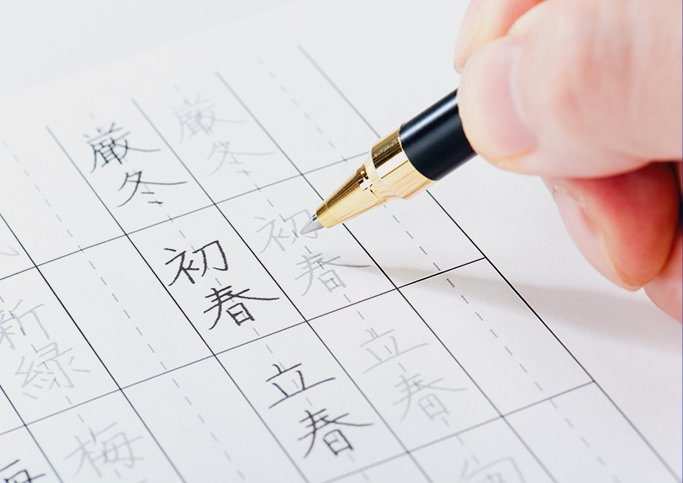
position
mae/yoko/ue/ushiro… Expressions to convey “position” in Japanese
6/14/2021
How do you convey “position” in Japanese? In Japanese, positional expressions can be described in different ways even when they refer to the same position. To accurately convey a position in Japanese, it is helpful to add a noun indicating the reference before the expression indicating the position. There is a basic form of expressions for conveying position.
When conveying position, you should use “の” (no) by connecting a positional expression and a reference noun to make a basic form: “a reference noun” + “の” + “a positional expression.”
1. ~の前(~ no mae)
The “前” (mae) used in positional expressions refers to the front side of an object or the front side as seen from yourself. Saying “~の前” (~ no mae) indicates that the object is ahead of a position. However, the term “~の前” (~ no mae) is also used to describe time and order. Be sure not to mistake the meaning.
Example
わたしは、扉の前にいます。
Watashi wa, tobira no mae ni imasu.
I'm in front of the door.
Example
猫が、椅子の前で寝ています。
Neko ga, isu no mae de nete imasu.
A cat is sleeping in front of the chair.
Example
車は、車庫の前に停めました。
Kuruma wa, shako no mae ni tomemashita.
The car parked in front of the garage.
2. ~の後ろ(~ no ushiro)
The “後ろ” (ushiro) used in positional expressions is the opposite of the “front.” Saying “~の後ろ” (~ no ushiro) indicates that an object is behind a position. “~の後ろ” (~ no ushiro) and “~の後” (~no ato) use the same kanji, but have different readings and meanings. “~の後” (~no ato) is an expression used to convey the order of things. So, use “~の後ろ” (~ no ushiro) to indicate a position.
Example
花は、木の後ろに咲いています。
Hana wa, ki no ushiro ni saite imasu.
The flowers are blooming behind the tree.
Example
塩は、砂糖の後ろにあります。
Shio wa, satō no ushiro ni arimasu.
The salt is behind the sugar.
Example
山の後ろは、海です。
Yama no ushiro wa, umi desu.
Beyond the mountain is the sea.
3. ~の横(~no yoko)
“横” (yoko) represents the horizontal position. You can use “~の横” (~no yoko) for anything on the horizon, regardless of distance. For example, when you say “駅の横の建物,” “建物” includes not only one building right next to the station, but other buildings in the same row as the station.
Example
畑の横は、川です。
Hatake no yoko wa, kawa desu.
Beside the field is a river.
Example
ぼくの横に、犬がいます。
Boku no yoko ni, inu ga imasu.
There's a dog beside me.
Example
電話は、冷蔵庫の横にあります。
Denwa wa, reizōko no yoko ni arimasu.
The phone is located alongside the fridge.
4. ~の隣(~ no tonari)
“隣” (tonari) in the positional expressions means the closest thing in the left and right line. We use it regardless of size or distance like “the country next to Japan” or “the person next to Mr.○○”. “隣” (tonari) and “横” (yoko) are similar expressions, but they refer to a slightly different range of objects.
For example, there are 3 apples next to oranges. If you use "横(yoko)" to say "apples next to the orange," we include not only one apple right next to the orange, but all three apples. However, when you use "隣(tonari)" to say "apples next to the orange," we mean only the one that is right next to the mandarin orange.
Example
わたしの席は、山本さんの隣です。
Watashi no seki wa, Yamamoto-san no tonari desu.
My seat is right next to Mrs. Yamamoto.
Example
駅の隣に、新しいビルができた。
Eki no tonari ni, atarashī biru ga dekita.
The new building was built right next to the station.
Example
こんにちは、あなたの隣に座ってもいいですか?
Kon'nichiwa, anata no tonari ni suwatte mo iidesu ka?
Hello, can I sit next to you?
5. ~の右(~ no migi)
The phrase “~の右” (~ no migi) means that the object is on the right side.
Example
味噌汁は、ご飯の右に置いてください。
Misoshiru wa, gohan no migi ni oite kudasai.
Place the miso soup to the right of the rice.
Example
床屋の右に、靴屋があります
Tokoya no migi ni, kutsuya ga arimasu
There is a shoe store on the right side of the barber.
Example
吉田さんは、山田さんの右にいます。
Yoshida-san wa, Yamada-san no migi ni imasu.
Mr. Yoshida is to the right of Mr. Yamada.
6. ~の左(~ no hidari)
The phrase “~の左” (~ no hidari) means that the object is on the left side. The Japanese words “右” and “左” represent “right” and “left,” respectively. The kanji are similar and easy to mistake, so be careful.
Example
わたしは、郵便局の左を曲がります。
Watashi wa, yūbinkyoku no hidari wo magari masu.
I turn left at the post office.
Example
韓国は、日本の左にあります。
Kankoku wa, Nihon no hidari ni arimasu.
South Korea is to the left of Japan.
Example
わたしの家は、公園の左の家です。
Watashi no ie wa, kōen no hidari no ie desu.
My house is to the left of the park.
[日本のことが気になる?一緒に日本語を学びませんか?]
7. ~の上(~no ue)
The phrase “~の上” (~no ue) is used to indicate that the object is high up in three dimensions.
Example
りんごは、棚の上にあります。
Ringo wa, tana no ue ni arimasu.
The apples are on the shelves.
Example
頭の上に、鳥がとまりました。
Atama no ue ni, tori ga tomarimashita.
The bird perched on my head.
Example
丘の上は、広い野原です。
Oka no ue wa, hiroi nohara desu.
The top of the hill is a large field.
8. ~の下(~ no shita)
The word “下” (shita) used in positional expressions indicates the opposite direction of “up.” The phrase “~の下” (~ no shita) indicates that the object is lower than the reference point.
Example
この土の下に、ごみを埋めました。
Kono tsuchi no shita ni, gomi wo ume mashita.
I buried garbage under this soil.
Example
今日は、桜の木の下で食事をしました。
Kyō wa, sakura no ki no shita de shokuji wo shimashita.
Today, I ate under the cherry blossoms.
Example
蟹は、岩の下にいます。
Kani wa, iwa no shita ni imasu.
The crab is under the rock.
9. ~の中(~ no naka)
The positional expression “中” (naka) is a word that describes the inside of a space. It is mainly used for buildings, furniture, and liquids. In metaphorical expressions, it is also used to describe “心の中,” for example.
Example
袋の中は、みかんでいっぱいです。
Fukuro no naka wa, mikan de ippai desu.
The bag is full of oranges.
Example
食堂は、会社の中にあります。
Shokudō wa, kaisha no naka ni arimasu.
The cafeteria is inside the company.
Example
この家の中に、ねずみがいます。
kono ie no naka ni, nezumi ga imasu.
There is a mouse in this house.
10. ~の外(~ no soto)
The phrase “~の外” (~ no soto) is used to convey the idea of being outside or outside of a space.
Example
学校の外が、騒がしい。
Gakkō no soto ga, sawagashī.
It's noisy outside the school.
Example
あなたは、お店の外で待っていてください。
Anata wa, omise no soto de matteite kudasai.
Please wait outside the store.
Example
窓の外は、雪が降っている。
Mado no soto wa, yuki ga futte iru.
It's snowing outside the window.
11. ~の近く (~ no chikaku)
The phrase “~の近く” (~ no chikaku) conveys the proximity of an object. Everyone has a different sense of distance. You can use various expressions such as “near the station” and “near America.”
Example
わたしは、交番の近くに住んでいます。
Watashi wa, kōban no chikaku ni sundeimasu.
I live near the police box.
Example
湖の近くまで、歩きましょう。
Mizūmi no chikaku made, aruki mashō.
Let's walk up to the lake.
Example
森の近くは、空気がきれいだ。
Mori no chikaku wa, kūki ga kireida.
The air is clean near the forest.
12. ~の向かい(~ no mukai)
The positional expression “向かい” (mukai) indicates the state of being in front or facing. “~の向かい” (~ no mukai) is also used to convey that objects are facing each other across the line.
“向かい” (mukai) and “前” (mae) have slightly different meanings. For example, if you use “前” (mae) to say “駅の前の店,” “店” includes several shops in front of the station. However, when you use “向かい” (mukai) to say "駅の向かいの店,” “店” means only one shop in front of the station.
Example
寿司屋は、郵便局の向かいにある。
Sushi-ya wa, yūbinkyoku no mukai ni aru.
The sushi restaurant is across from the post office.
Example
薬局の向かいの駐車場に、来てください。
Yakkyoku no mukai no chūshajō ni, kite kudasai.
Please come to the parking lot opposite the pharmacy.
Example
家の向かいは、広い空き地です。
Ie no mukai wa, hiroi akichi desu.
The other side of the house is a large vacant lot.
There are many other ways to express positions in Japanese. In order to accurately convey a position to others, it is important to choose an appropriate positional expression depending on the situation. Let's practice various expressions with the example sentences. If you feel that the example sentences are not enough, why don't you study Japanese in earnest and learn to speak various expressions in Japanese?
If you want to study Japanese right away, why don't you sign up for a free membership to Human Academy Japanese Language School Plus. You can experience practical Japanese lessons by experienced teachers for free.
CATEGORIES
FEATURED TAGS
RECOMMENDATION
-
 報BUSINESS TERMS
報BUSINESS TERMSWhat is ”Ho-Ren-So”, one of the basic manners when working in Japan?
10/30/2020
-
 伝WORDS & GRAMMAR
伝WORDS & GRAMMARWhat is easy Japanese?
10/30/2020
-
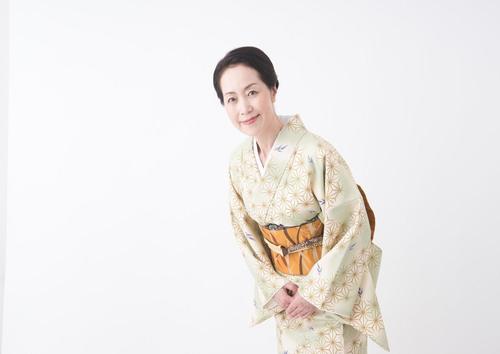 礼MANNERS
礼MANNERSJapanese greeting customs and origins. What are the greetings from other countries?
10/30/2020
-
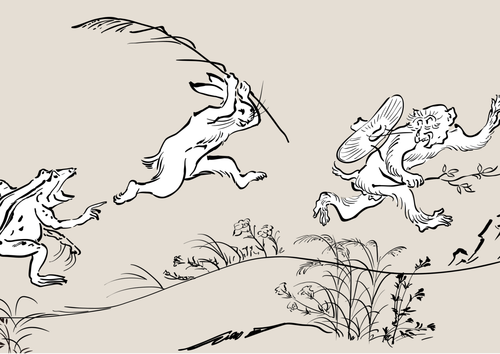 戯COMIC & GAME
戯COMIC & GAMEThe roots of animation and manga? Introducing bird and beast caricatures
10/30/2020
-
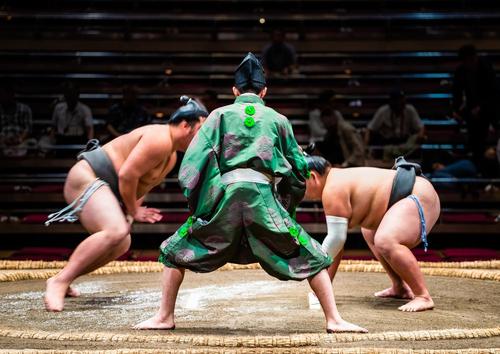 戦SPORTS
戦SPORTSThe history of sumo goes back to the mythical world! ?? Transition from myth to modern times
10/30/2020
LET’S PLAY
KARUTA!
Do you know the meaning of this...
NEXT...
FURTHER EXPLORATION
INTERESTED
IN JAPAN?
WHY DON’T YOU
LEARN JAPANESE WITH US?
START LEARNING
JAPANESE
WITH HUMAN ACADEMY!
ONE OF
THE MOST POPULAR
JAPANESE
LANGUAGE SCHOOLS
JAPANESE
LANGUAGE SCHOOL
OFFERING EXCELLENT
DETAILED LESSONS

ONLINE SCHOOL
- Learn with your classmates from all over the world
- Variety of Courses for All Needs
- FREE Trial Lesson available

TOKYO, OSAKA
- Offer the Best Curriculum for You
- Make New Japanese Learning Friends
- Many Opportunities to Practice Japanese
MAKE FURTHER
STEPS
WITH HUMAN ACADEMY!
ONE OF
THE MOST POPULAR
JAPANESE
LANGUAGE SCHOOLS
JAPANESE
LANGUAGE SCHOOL
PRODUCING MANY
JLPT N1 CERTIFIED
STUDENTS!

ONLINE SCHOOL
- Learn with your classmates from all over the world
- Variety of Courses for All Needs
- FREE Trial Lesson available

TOKYO, OSAKA
- Support Your Higher Goal of Japanese Learning
- Perfect Environment for Japanese Learners
- Learn with Your New Japanese Study Mates



